Water Powered Sump Pump BasePumpAt Pumps Selection |
|
Base pumps, water powered sump pumps, will eliminate your worry about battery runtime and a failed battery because of depletion. Why is the Basepump water powered pump dependable? Why is city water required? Will it require too much water and be costly to use? Can a DIY (do it yourselfer) install it? Will Basepump customer service provide support? Do other consumers like the Basepump? All of these questions and more will be addressed in the following information. |
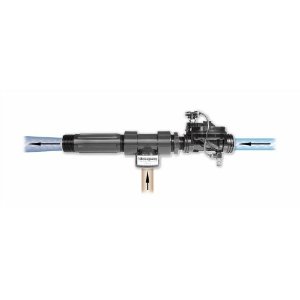 |
Click on a specific Basepump topic if you wish to go there immediately, otherwise scroll down the page to read about the BasePumps RB750, HB1000 and CB1500 water powered pumps.
|
Read More Detailed Review 1. Basepump RB750, HB1000, CB1500 ReviewWater Powered
Sump Pumps Quick Search |
| The Basepump is manufactured by Base Products Corporation located in Buffalo, New York. They have been in the backup sump pump business since 1999. Their founder knew there had to be a more dependable way to power a backup sump pump than by battery. Through testing the theory of water pressure and hydraulics, the Basepump was invented. Their pumps and parts are manufactured in the United States. |
| The three Basepump models are RB750, HB1000, and CB1500. The RB750 has a pumping volume of 750 to 900 gallons per hour or 12.5 to 15 gallons per minute depending upon the city water pressure inflow.< /span> The HB1000 has a pumping volume of 1,000 - 1,400 gallons per hour or 17 - 23 gallons per minute depending upon the city water pressure inflow. The CB1500 has a pumping volume of 1500 - 2000 gallons per hour or 25 - 33 gallons per minute. All three models can also be purchased with an AVB (Atmospheric Vacuum Breaker) to prevent backflow of non-potable (sump pump) water into potable (drinking) water. Go back to Basepump Topics Index |
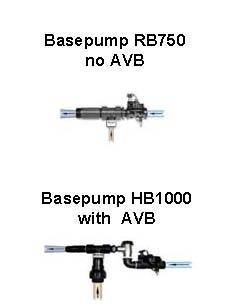 |
|
Basepump water powered pumps are constructed from heavy duty schedule 80 polypropylene which is known for high impact resistant, good chemical resistance, and durability. Polypropylene can withstand a continuous service temperature of 180 degrees Fahrenheit. It has practically unlimited longevity. The hardware is stainless steel which is rust resistant. Only the float and suction tube are in contact with the sump water. There are no moving parts that will break or require maintenance. In addition no electricity is required. These pumps are reliable, heavy duty and durable. The pumps are small. RB750 is 14 ½ inches long, 4 inches wide and 10 inches high weighing 1.5 pounds. HB1000 is 15 ½ inches long, 4 inches wide and 10 inches high weighing 2 pounds. CB1500 is 15 ½ inches long, 6 inches wide and 10 inches high weighing 3 pounds. |
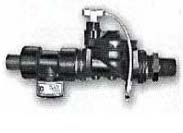 |
|
Since only the suction pipe and float are in the sump pit, the pumps require little space in the pit. The RB750, HB1000 and CB1500 require somewhere around 4 inches. The float valve is attached to the suction pipe and needs enough room to rise as the water level in the pit rises. Go back to Basepump Topics |
|
The PSI of municipal water needs to be 40 to 100 (pounds per square inch). PSI above 100 or below 40 will not work. This is one of the reasons why well water cannot be used. Well water does not have stable, sufficient pressure and is not available when the electricity fails. Municipal city pumps also shut down during a major power outage but most towns have elevated water towers that can last quite a while using gravity to provide water pressure. At a 10 foot lift with 60 PSI (pounds per square inch), the pumps use only 1 gallon of city water to remove 2 gallons of sump pit water. |
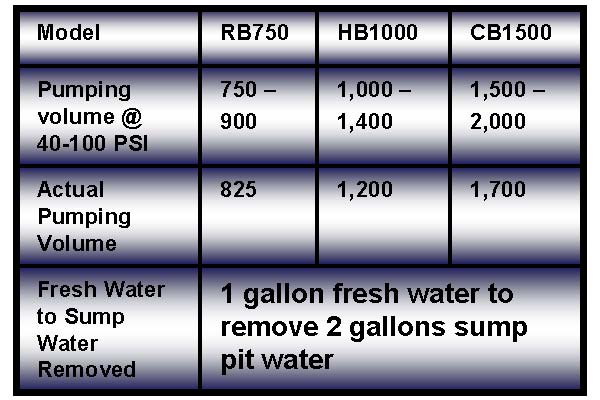 |
| The float is mounted to the suction pipe located in the sump pit at a height at which the water should be removed from the pit. As the water rises, the float rises and hydraulically activates the ejector valve which sends a powerful stream of water from the city water supply through the Basepump ejector. This creates a strong force which draws the water from the pit through the suction pipe and ejects it out the discharge pipe to out doors. As the water is removed from the pit, the float lowers to its original position and the pump stops. This pump system operates automatically and independently from the primary sump pump system. Go back to Basepump Topics |
|
Getting a water line to the pump is the hardest part. Plan before you cut. Plan where the Basepump ejector will be placed; decide where the discharge tubing will go out from the house; decide if the Basepump should have its own discharge line; identify the miscellaneous items you need to buy; check out the length of tubings, the transfer tube, suction pipe and PVC piping; do a dry run with the 45 degree elbows to see the direction they should be placed. Then do the install. Mount the Basepump ejector to the ceiling joist; install the suction pipe with the supplied 45 degree elbow; install the float assembly to the suction pipe; install the discharge tubing (be sure to drill a hole through the outside wall of your house if the Basepump will have its own discharge line) and lastly connect the water supply.
If you are an experienced plumber, the job will take approximately 1 ½ hours. If you have some plumbing experience, plan for at least 4 hours of work. If you are a novice, expect the install to take somewhere around 8 hours. Basepump provides detailed instructions and their customer support is terrific. They do answer their phone and are glad to help. They want you to be successful. If you must leave a message, they will call you back. |
 |
|
Water alarms are included. They let you know when the water level is high in the pit. The float is adjustable. The Base Products Corporation guarantees a 30-day 100 % product satisfaction. They lead the industry with a 5 year warranty. They also lead the industry in the highest pumping rates. They offer an optional solder-free no sweet water supply piping kit in ½ and ¾ inch sizes. Go back to Basepumps Topics |
| The Basepump kit includes an ejector, float, adapter, fittings, discharge tube, transfer tube, mounting clamps, one way check valve, water alarm and miscellaneous hardware. You will need to shop for PVC pipe, PEX tubing (if you choose to use it rather than all PVC piping), sharkbite tee, sharkbite ball valve, a small pipe cutter, plumbers tape, purple PVC primer and cement, a 1 3/8" drill bit in case you need to drill a hole to the outside of your house for the discharge pipe, and caulk. |  |
|
The details of how to install the Basepump RH750 are provided by the following two videos. Note how the video from BasePump Corporation shows how the design makes it easy for the novice to install. The video includes a demo for the backflow preventer, shutoff valve, and brass water supply installation.
The RH1000 Basepump is a high performance water powered backup sump pump. It includes a Dual-Check Backflow Preventer, several brass Push-in type water supply installation parts, and a shutoff valve. It is ideal for home owners with high volume of ground water in pit. |
|
Is your home supplied by city water and is the water pressure within 40 to 100 PSI? To see if your household water pressure meets the requirements of the Basepump, the city water flow rate must be at least 7 GPM for the RB750; 10 GPM for the HB1000; and 15 GPM for the CH1500. The following test will tell you the flow rate of your city water. Take a 5 gallon bucket and fill it with water from a hose spigot. Time the filling of the bucket. The 5 gallon bucket must fill in 40 seconds of less to install the RB750; in 30 seconds or less to install the HB1000; and in 20 seconds or less to install the CB1500. If it takes longer than 40 seconds, it is important to note if there are any obstructions that could be removed. If none can be found, the Basepumps will not work for you. If your village requires the installation of a Reduced Pressure Zone (RPZ) device and your household water pressure is 45 PSI or less, the Basepump will not work for you. If your household water pressure is greater than 100 PSI, the installation of a RPZ will lower the pressure, but maybe not enough for the amount of extra water pressure that exits. If high water pressure is not lowered to 100 PSI at the time of installation, water will come blasting out from the head gasket when the pump shuts off. Most household water pressure falls within the range of 40 to 100 PSI. Is your municipal water supply line at least ½ inch, ¾ inch or 1 inch in diameter? The municipal water supply line must be ½ or ¾ inch in diameter for the RB750; ¾ inches in diameter for the HB1000; and ¾ or 1 inch in diameter for the CB1500 Basepump. Piping connected to the municipal water supply line must be copper or the minimum required in your area which may be PVC, CPVC or PEX. Galvanized iron piping cannot be used because it is smaller inside and will rust and deteriorate. Would a pumping capacity of 7, 10 or 15 GPM keep up with your backup pumping needs? The Basepump RB750 pumps 12.5 to 15 GPM (gallons per minute) depending upon the city water pressure inflow. The HB1000 pumps 17 to 23 GPM depending upon the city water pressure inflow. The CB1500 pumps 25 to 33 GPM. Would you prefer the dependability of no battery, no charger, no moveable parts, no impeller, no motor, no wires, no maintenance required and fully automated backup sump pump? The Basepump is dependable because it requires no battery, no charger, no motor, no impeller, no wires and no maintenance. It is fully automated. Would you mind if the city required you to install a device that would protect the potable water supply from potential contamination? Most states and municipalities require a device to be installed. Check with your city to learn about its standards. If you answered YES to the above questions and NO to the last question, the Basepump is for you. Go back to Basepump Topics |
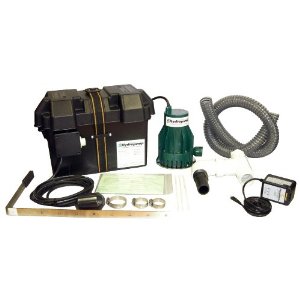 |
Check out the Basepump RB750, HC1000 and CB1500 now. Basepump RB 750 Water Powered Backup Sump Pump |
|
Here is what some customers are saying about the Basepump.
Great Water Pump
By Daniel High, Illinois, Sept. 14, 2013
At first when I saw the pump was made of plastic I was concerned; however once I felt of it I knew it did not matter. The plastic is very heavy and strong. I am an experienced do it yourself-er and found the install not difficult because I followed the instructions. It took me 2 hours to complete the installation. Since I was experienced with plumbing planning came easy for me. I think planning is very important for a successful install. I am guessing if I would have hired a plumber, he would have completed the installation in 1 ½ hours.
I checked out our water pressure before buying, so I would know if the pump would work for us.
I installed a double check valve. I did not buy the solder-free water supply piping kit because I like to do soldering. But I think it is a nice option for those who have never done soldering before.
Nice Backup Pump
By Gilbert White, New York, August 29, 2014
My friend just installed a RB750 for me. I am very happy with it. I did notice that it makes a loud noise when it shuts off. I was told I might want to install an AVB.
The cost of our water is not cheap, but I decided I would rather pay for the water than worry about a battery that may run out of juice before the primary sump pump can operate again.
The first time the pump operated was during the BIG flood. It worked without a problem. It was a good feeling that I did not have to worry about a battery. Our water pressure is 60 PSI so this pumps optimally according to their installation instructions.
Oh, I must tell you, the first time I heard the loud noise when the pump shut off I called the company. Their customer service was so nice. I actually felt like they cared and wanted to help me.
Interesting Backup Pump
By Dave Ganne, Atlanta, GA, June 23, 2014
I had the HB1000 installed by our plumber. The installation instructions looked easy; but I did not want to cut into our house water supply in case I made a mistake. The plumber did it all in 1 hour and 20 minutes.
It is very interesting how this pump works. The water pushes the float up and at some point activates the ejector valve which sends water through the pump. The pressure of the water seems to suck up the water for the pit through this suction pipe and out the house through the discharge pipe. There is a screen at the end of the suction pipe to prevent it from clogging. This is a most interesting concept.
I had the plumber install PVC piping instead of flexible tubing. I feel that is more permanent and less likely to fail.
I also had a water alarm installed so I know the water level in my pit. I want to know when the Basepump is running.
Water Powered Pump is Good
By Jimmy Dean, Pennsylvania, April 5, 2014
I prefer water powered pump over a battery backup pump because I have seen my brothers and friends battery backup pumps fail too many times for various reasons. My RB750 worked fine during the heavy rain we had. My friends were all worrying about their batteries.
I called my village to find out what happens to city water when the power goes out. They explained they have a high water tower which operates on gravity when the electricity goes out so I have nothing to worry about. I feel good it is made in the USA too.
I am glad I found this pump. It does not have any moving parts, needs no electricity or battery to run and it is completely automatic.
Like the pump
By Guy Bemoan, Illinois, November 7, 2013
I installed the HB1000 myself. I was not sure if I could do it. It was not that hard; however I must admit I spent a lot of time doing a dry run first. Once I completed the planning, it took me 6 hours to install. I thought the hardest thing was to get the water line to the pump. I purchased the following things before the installation: a 1" PVC pipe, PEX tubing, shark bite tee, shark bite ball valve, a small pipe cutter, plumbers tape, purple PVC primer and cement, a 1 3/8" drill bit, and caulk. I am glad I installed this pump. I do not have to think about batteries any more.
Surprised at this pump. It works great.
By Danny Whitmore, Wisconsin, November 1, 2013
We installed the HB1000. It worked great during our surprise October snowstorm. Our power was out for 3 days. The snow melted fast because we got rain. Our neighbors ended up with flooded basements. The Basepump HB 1000 ran every 5 minutes to keep up with water coming into the pit; but it never missed a beat. The only negative was the loud hammer sound when it shut off. I plan to add an arrestor to the supply line sometime soon. It is a great product that performs exactly as advertised.
It works well.
By Tim, Whitehall, WI, October 23, 2013
I installed the HB1000. Wow. I was totally blown away when the pump kicked on. I was expecting a wimpy sound; however I heard a heard a mean growl and the water level in the pit rapidly drop until the pit was drained and the pump turned off.
I am very pleasantly surprised, this pump is a great backup pump. I sleep very soundly knowing it is there, especially when I am away from home. I highly recommend this pump. Great backup pump
By John Ashwood, Chicago, IL, March 5, 2010
One of my friends has a RB750. I have seen it and he like so we got one because we look power at least three times a year. I have had a battery backup sump pump for many years, but was always wondering what I would do if the battery had to last several days. Now I do not have to worry about it. The Basepump does not run on battery or electricity. It runs by water power. I remember when we first thought about installing it how concerned I was about if we had enough water pressure. We did the water pressure test before buying and found out we have 55 PSI. This pump installed pretty easily and works great. I highly recommend it.
April 20, 2013 update: The pump is still working great! The switch on my main pump has been acting up, so the water powered pump is getting more use than I expected.
The only thing I wish I would have done differently is install a better water hammer arrester. It does have a fairly loud water hammer noise. Go back to Basepump Topics |
 |
The Basepump RB750, HC1000 and CB1500 provide complete automatic, maintenance free backup sump pump protection since they have no moving parts, require no battery and no electricity, have no impeller and a float that operates by hydraulics. If you are on municipal water and your incoming water has between 40 and 100 pounds per square inch pressure, the Basepump will offer you years of carefree basement flood protection if your primary sump pump fails to operate. The warranty is 5 years however Basepump Corporation is expecting the pumps to last at least 25 years.
Basepump RB750-AVB with Back-flow Prevention Vacuum Breaker Basepump HB1000 Water Powered Backup Sump Pump (Handles more water than HB750) Basepump HB1000-AVB with Back-flow Prevention Vacuum Breaker (Handles more water than HB750) Basepump HB1000-PRO Water Powered Backup Sump Pump for High Volume (Handles more water than HB1000) Basepump CB1500 Water Powered Backup Sump Pump (Handles more water than HB1000) |
|
Check Other Brand Water Powered Sump Pumps , Battery Backup Sump Pumps, and Submersible Sump Pumps. Go back to Basepump Topics |
